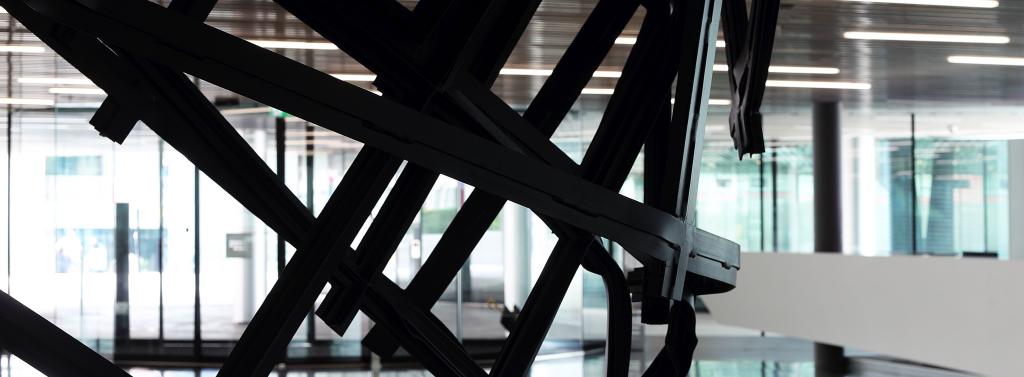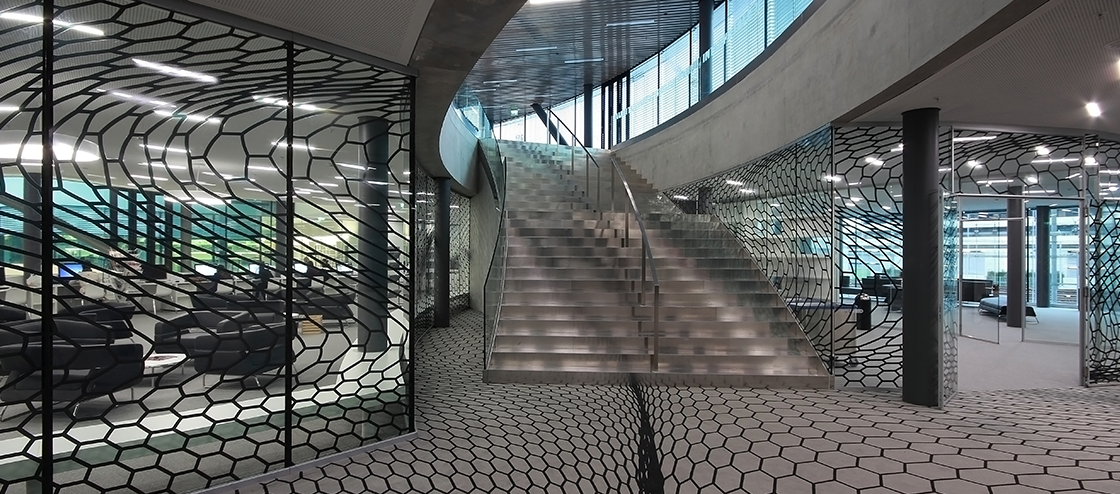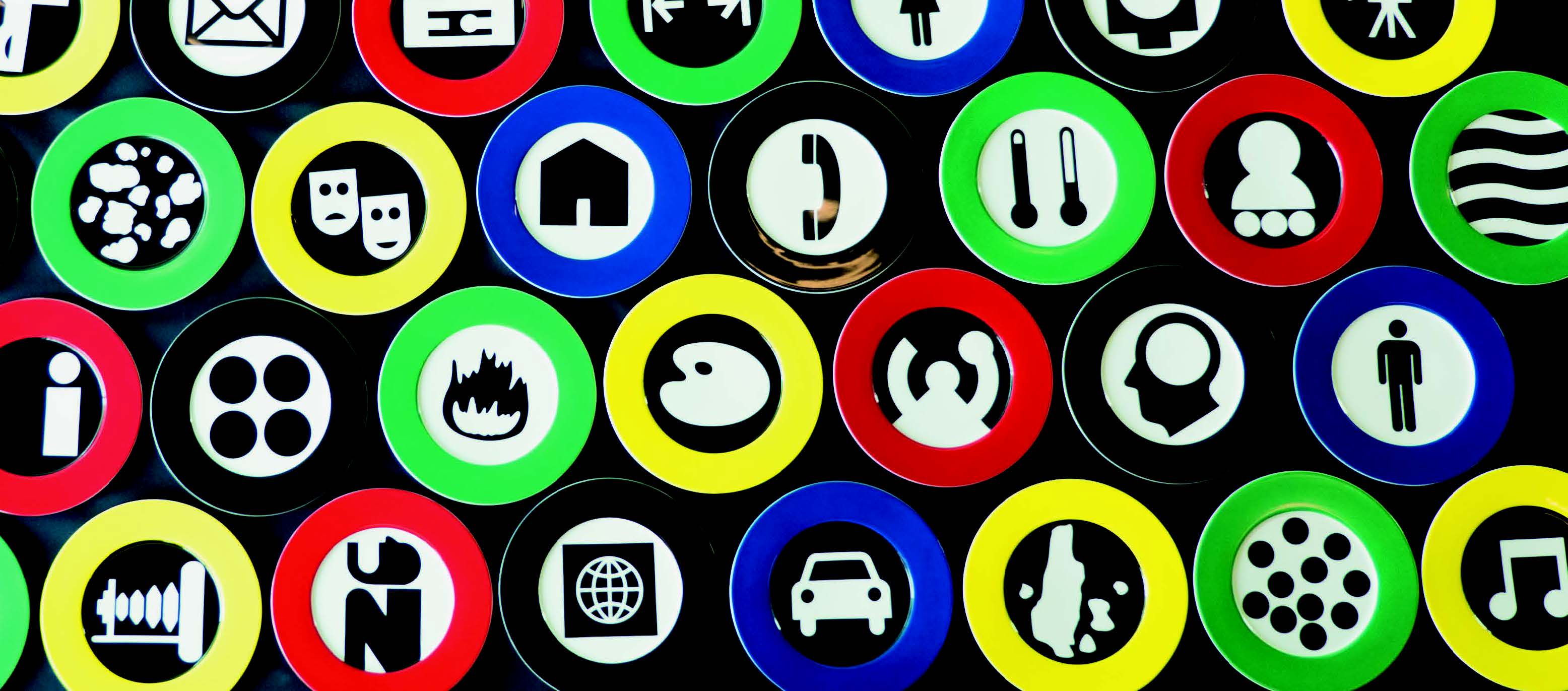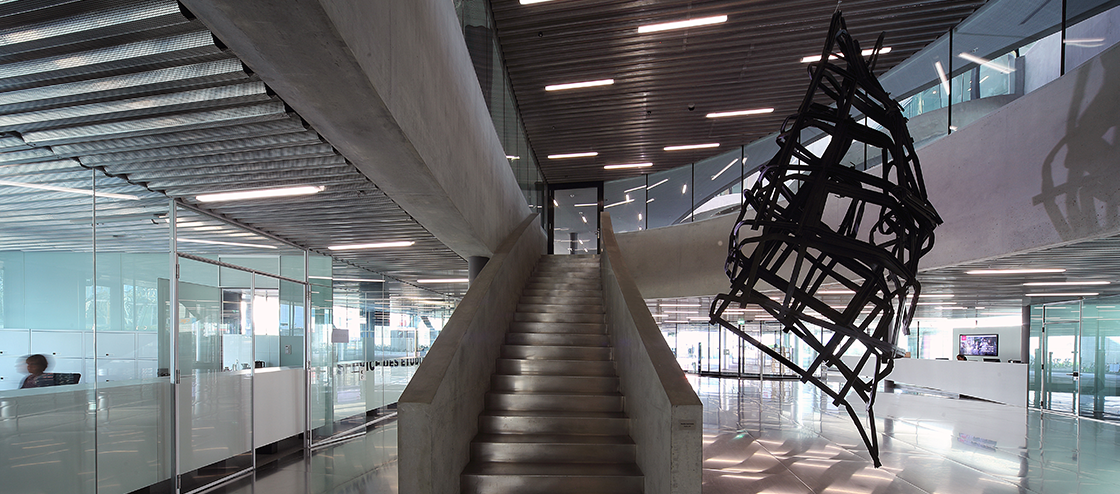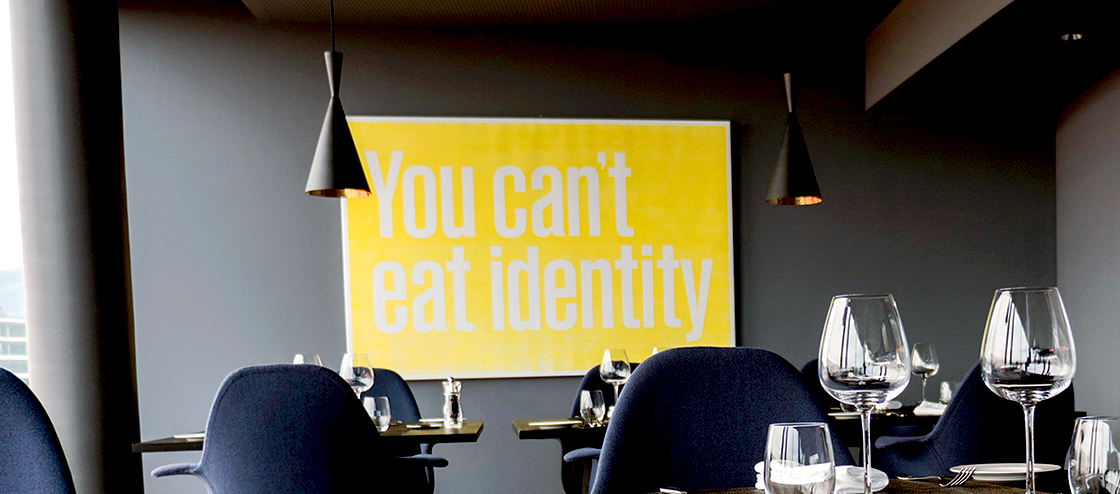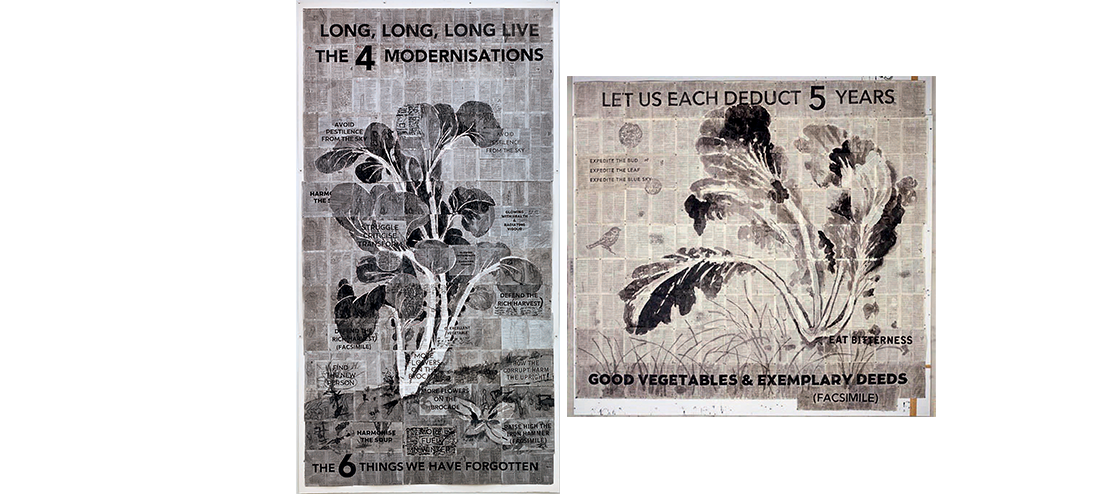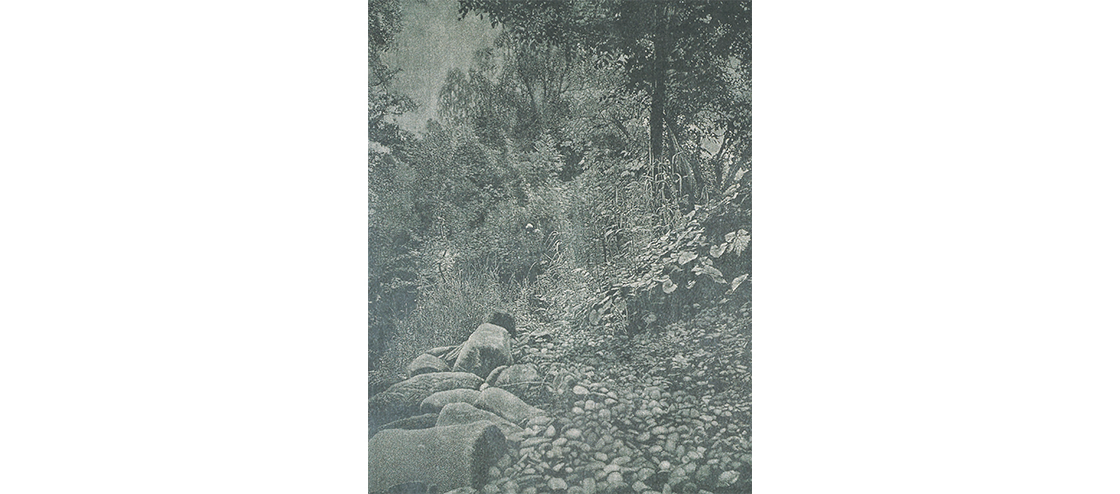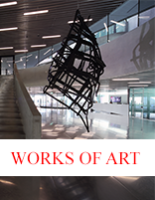WILLIAM KENTRIDGE
1955, lives and works in Johannesburg
Auditorium Ivan Pictet
“I am interested in a political art, that is to say, an art of ambiguity, contradiction, uncompleted gestures and uncertain endings – an art that keeps optimism in check and nihilism at bay.”
William Kentridge is an actively engaged and internationally recognised South African artist. His favourite subjects are history and its evolution, the systems of power and authority, memory and forgetting.
Clearly at home in the Ivan Pictet auditorium, these two monumental drawings introduce a subtle universe, both organic and literary, embracing the history of Chinese authoritarian regimes but apprehended from the point of view of a contemporary artist from another continent.
At first glance, they present themselves to the spectator as very beautiful ink drawings, representing plants. But the spectator’s delight rapidly gives way to questioning the crossing of genres between drawing, text and medium, in this case book pages. By decomposing the piece, juxtaposing pages in the manner of a mosaic, Kentridge affixes his work to existing knowledge in the seeming form of a Chinese encyclopaedia, a collection of facts and knowledge existing within a precise temporality. The artist portrays well-known motifs from erudite 14th-century paintings of vegetation and vegetables simultaneously with elements from scripture and fragments of sentences in English which oscillate between ancient parables and parodies of Chinese Cultural Revolution political slogans.
In LONG, LONG, LONG LIVE THE 4 MODERNISATIONS, the artist refers to Mao Zedong’s “modernisation” campaign, the Great Leap Forward, in which he gathered the Chinese in a struggle against the “Four Pests” – flies, mosquitos, rats and sparrows – which composed, according to the Maoist regime, a threat to the country’s crops. The campaign launched to eradicate millions of sparrows resulted notably in an invasion of crickets that contributed to the greatest famine known in China between 1958 and 1961. The other slogans, such as “HARMONISE THE SOUP”, “GLOWING WITH HEALTH & RADIATING VIGOUR”, “STRUGGLE, CRITICISE, TRANSFORM”, simultaneously contain all the paradoxes of revolutionary optimism and the ironical criticism of the Maoist authoritarian system’s setbacks and its utopian dream.
Like an echo, GOOD VEGETABLES & EXEMPLARY DEEDS – LET US EACH DEDUCT 5 YEARS welcomes, like a semitransparent spectre, a rescued bird, while in the opposite angle the text “EAT BITTERNESS” resonates, bitterly evoking the scale of the famine.


